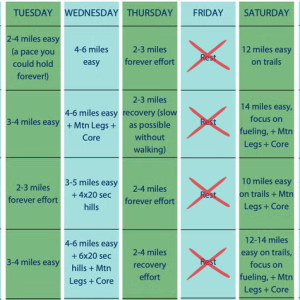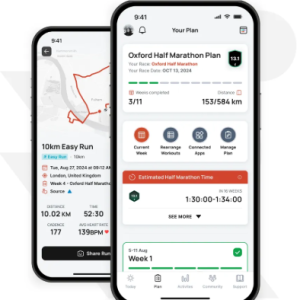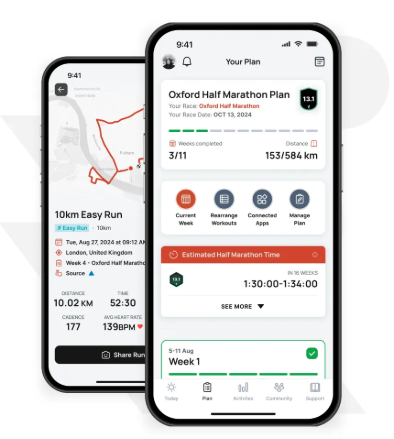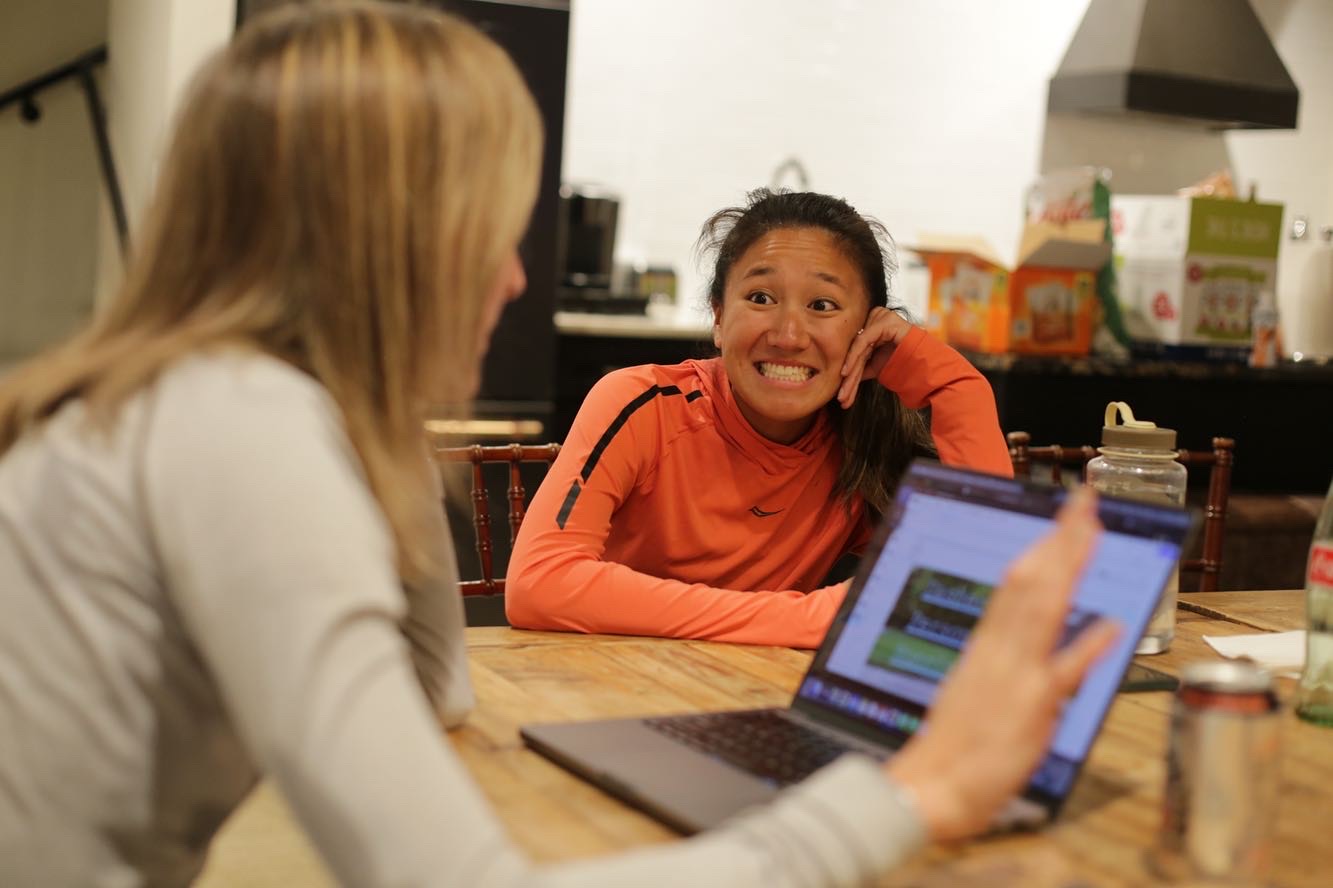6 weeks, 1 self-experiment, 0 planned rest days—here’s what happened.
As a coach, I believe in prescribing rest days. Adaptation happens during rest. Your body needs a break and you come back stronger. I believe this. However, when Team RunRun Editor-in-Chief, Ruby Wyles, asked me to write a piece on rest days, I got a facetious smirk on my face and decided to do some self-experimentation. I’m an ultrarunner so, of course, I’m going to push the limits and reevaluate beliefs of what is possible and what is best.
What would happen if I just didn’t have any rest days? How would my body feel? Would I get stronger and faster, or would I break down? How long would it take me to adapt? I’m not training for any specific race or adventure right now, so let’s just have fun and see. I mean, I love running and moving. It sounded amazing to do it every day.
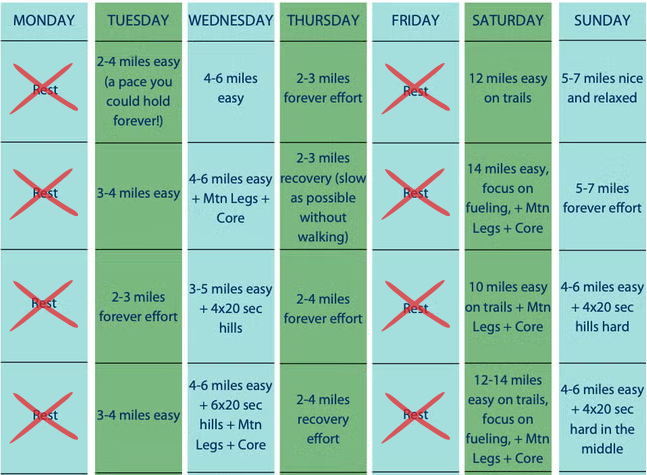
Disclaimer: This is an experiment of one. I do not encourage my athletes to do this. I give them rest days. At least one if not two per week. I also give them two or three rest days after peak training efforts (e.g. a 50 miler while training for a 100 miler). I’m just having fun here, seeing what happens and reporting back.
Setting Up the “No Days Off” Experiment
I’m more a “send it and see what happens” type of athlete, but for this I thought I should have some expectations set up. This is what my brainstorm sheet of paper says:
- Take a rest day when you need it but make it floating (i.e. not having a set rest day or structure to when to take one).
- You don’t need to run every day. Cross training works too.
- Give yourself some time to adapt to the experiment.
- Do this for 6 weeks and reevaluate.
- How are you going to measure your success or adaptation?
- Sign up for a race?
- Strava segment over and over again?
- Personal narrative?
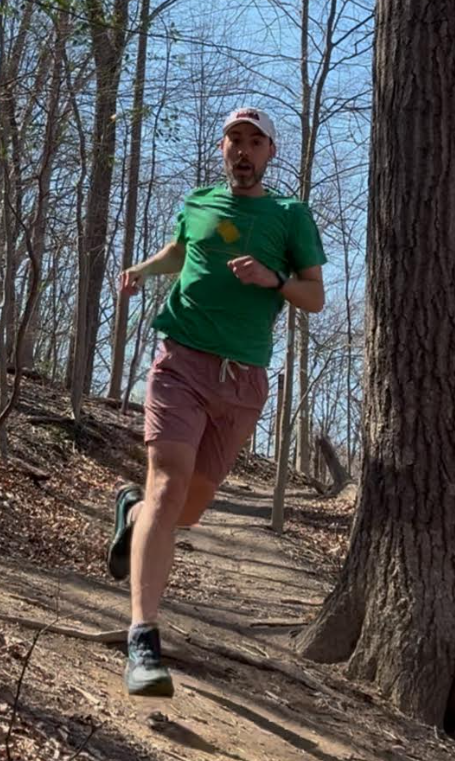
No Days Off: Weeks 1 & 2
I stretched myself during this time. Week 1 started with four days in a row of running, and just having a floating rest day based on how I was feeling. I felt like this really gave me a lot of control. Previously, I’ve had rest days where I am beat up and need it, but I’ve also had days where I felt like I could go back out there.
During these first two weeks, I had a particularly challenging back-to-back weekend of running but, surprisingly, on Monday I felt great! So, I got back out there again and pushed the rest day to Tuesday. That said, I did notice during this block that I was feeling really tired. I needed more sleep than usual, but mentally I was always ready to get out and run. I also didn’t notice a big change in my need to fuel. My legs were tired, but I just kept that floating rest day every four to five days. It didn’t feel sustainable right away, but it was fine for the purpose of this experiment. And we’re just getting started, right? No need to be concerned. Onwards and upwards!
No Days Off: Weeks 3 & 4
Bring on the bike; active recovery here we go! Introducing mountain biking, riding the indoor bike trainer, and road cycling has been a game changer for me. If my legs are tired, cycling helps flush out whatever fatigue is there so I can show up stronger for running the next day. Basically, on active recovery days, I’m just doing whatever I feel like that day.
Over the past ten days, I’ve mixed in trail and road running with indoor and road cycling, mountain biking, uphill treadmill hikes and runs, fatiguing hill repeats, easy aerobic days, tempo runs and more! I feel like Courtney Dauwalter out there (other than the massive talent differential between us) because I’m just doing what I feel like in the moment, whatever brings me joy. It feels really freeing and I’m moving for at least an hour every day. Now my body is craving it.
The one rest day I tried to take in this block did not start off so well. I felt super tired and irritable. I’ll admit, I could resist going out in the afternoon to reset, and afterwards my energy came flooding back. During this period, I certainly wasn’t getting as much sleep as I’d like–or is optimal–( I also have a three-year-old daughter so…) but when I hit the pillow, I am out hard. Nutrition wise, I ate a lot, but it felt appropriate for the work I put in. Overall, my legs were a bit tired, but they also just felt so strong at the same time.
No Days Off: Weeks 5 & 6
I decided to do a longer, adventure run on a local trail loop as a pseudo test: the Reservoir Run Test, and I didn’t plan a rest day leading up to it. I was coming to the end of my experiment, so I thought I’d simply throw it in the mix and see what happened. However, if I felt that I needed to rest beforehand, I’d do it, but otherwise the plan was to just cruise right into it.
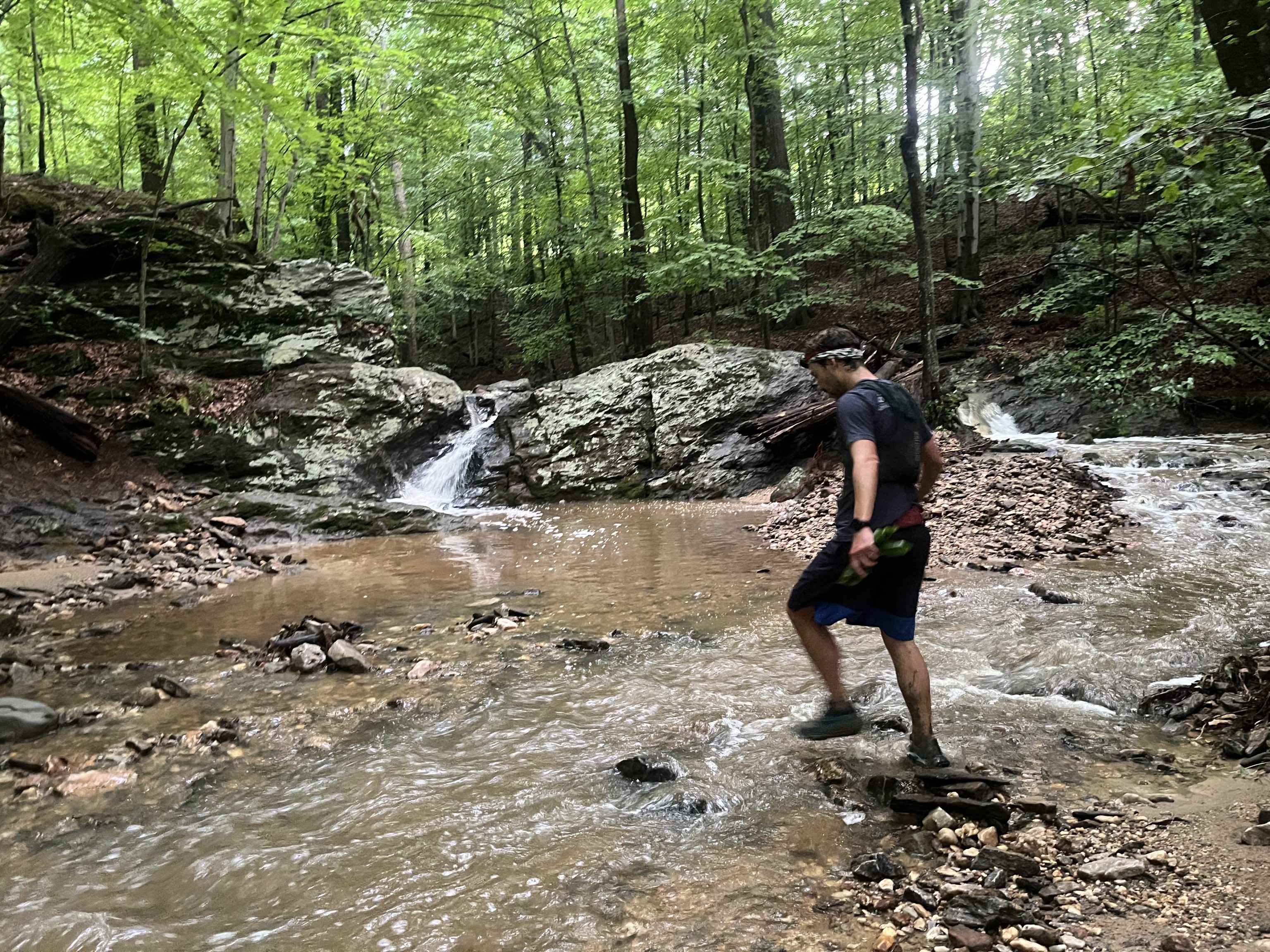
At this point, I was still floating rest days while mixing in cross training and other forms of active recovery. On average, I was probably going six days straight without a break. Unfortunately, I began to question whether I could trust myself with rest. Afterall, I’m an ultrarunner, I’m used to pushing into areas of discomfort. Can I be trusted with making responsible decisions about my need for rest? Or have I told my internal governor to “take a hike” so many times that it’s hesitant to even check in with me about needing a rest?
No Days Off: Reservoir Run Test
The reservoir loop is about 25 miles with 5000 feet of vert on overgrown bridle trails and fire roads. It’s hard and there are no refuel options, requiring you to carry all of your fuel from the start. Traversing these unmaintained trails is a true adventure run. In the end, I took a rest day before, but that was preceded by days of trail running prior.
I started the loop in the dark. I did not feel rested, and far from fresh. Then, around mile 20, I started to get some unfamiliar fatigue in my feet. My body just didn’t feel like it should have. While this is a hard loop, I still didn’t feel adequately prepped for the run. My volume had been there, but I sensed my legs were pretty beat up, and I started to get some pain in my right foot.
I finished, but not in a very happy way. This loop was way too hard, far harder than it should’ve been. While I got away with stacking shorter runs day after day, when I stepped up to the longer, more intense effort–one I had previously been used to–my body just wasn’t there the way I had hoped and expected it to be; I felt like I was pushing my body too much.
Takeaways and What I Learned
In the month since my experiment, I’ve just been mountain biking and running a few days a week; nothing too serious. Unfortunately, my right foot is still sensitive, so I’m prioritizing rehab and recovery in order to prepare for a big fall racing season. So, I have planned rest days now.

My personality loves being free and untethered. Floating rest days were very freeing, and I felt like I had a sense of control over where things were going. But upon reflection, I just don’t think I can trust myself to make the best decisions about my rest and recovery needs.
I wasn’t coached during this experiment, and I feel like I needed someone to tell me to take a break. My ultrarunning background is just going to keep me pushing forward until I really need a rest–forced through injuries or illness. I don’t think the floating rest days (or lack thereof) caused me to show up at my best, nor set me up for longevity moving forward. Since one of my main goals for me and my athletes is longevity in the sport, I’ve learned that I need something or someone to hold me accountable for giving my body permission to rest.
After reflecting on this experiment, I’m not confident in my ability to control my own rest days. I need to have them scheduled and then strictly adhere to the plan, or I need a coach to evaluate how I’m doing and be in charge of the floating rest days for me.
If you find yourself resonating here, it might be time to get a coach. Check out Team RunRun here, they have a coach for every runner, no matter your age, ability, budget, or goals.
Final Thoughts on Rest Days
Rest days are a great topic to discuss with your coach. This article from Running Warehouse details why they are powerful tools. They most certainly aren’t a step backwards. Hold yourself accountable to taking care of your body and your mind, and realize that, like me, you might think you know best, but we all have blind spots.
Albert Einstein wisely said “we cannot solve problems with the same thinking we used when we created them.”
Happy trails and happy rest days!

Ryan Williams is a parent, proud dog dad, athlete and coach who believes running is a metaphor for life. He specializes in forming positive bonds with runners of all ages, distances, and abilities from couch-to-5k to ultramarathon.

